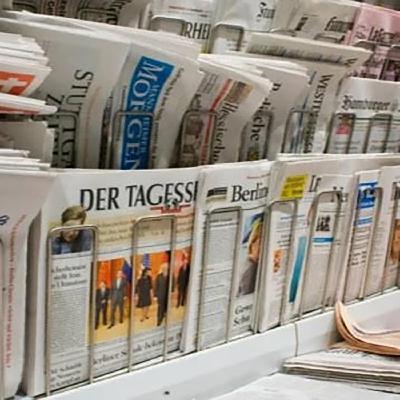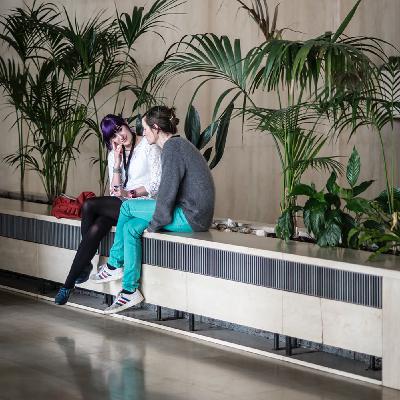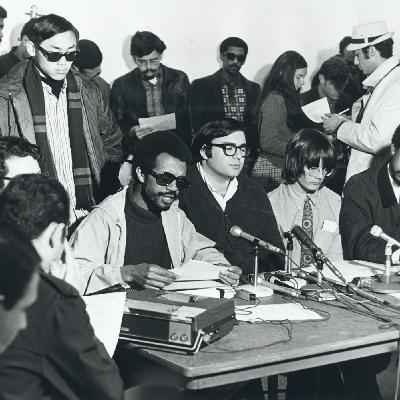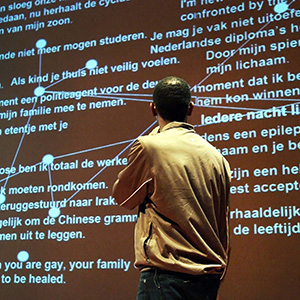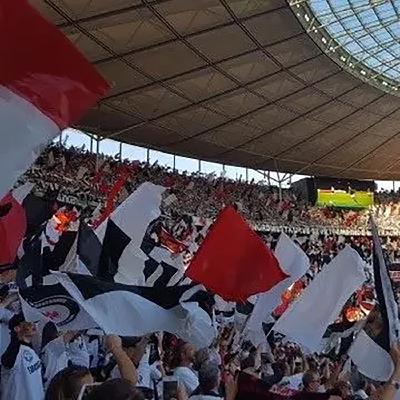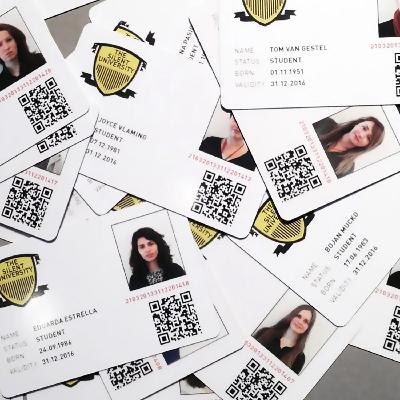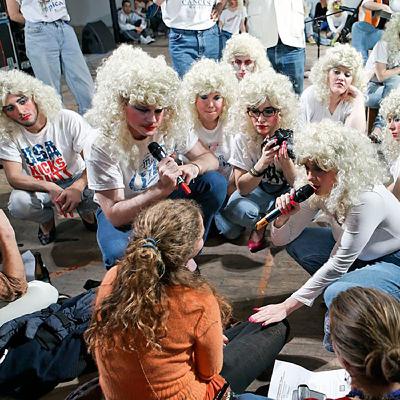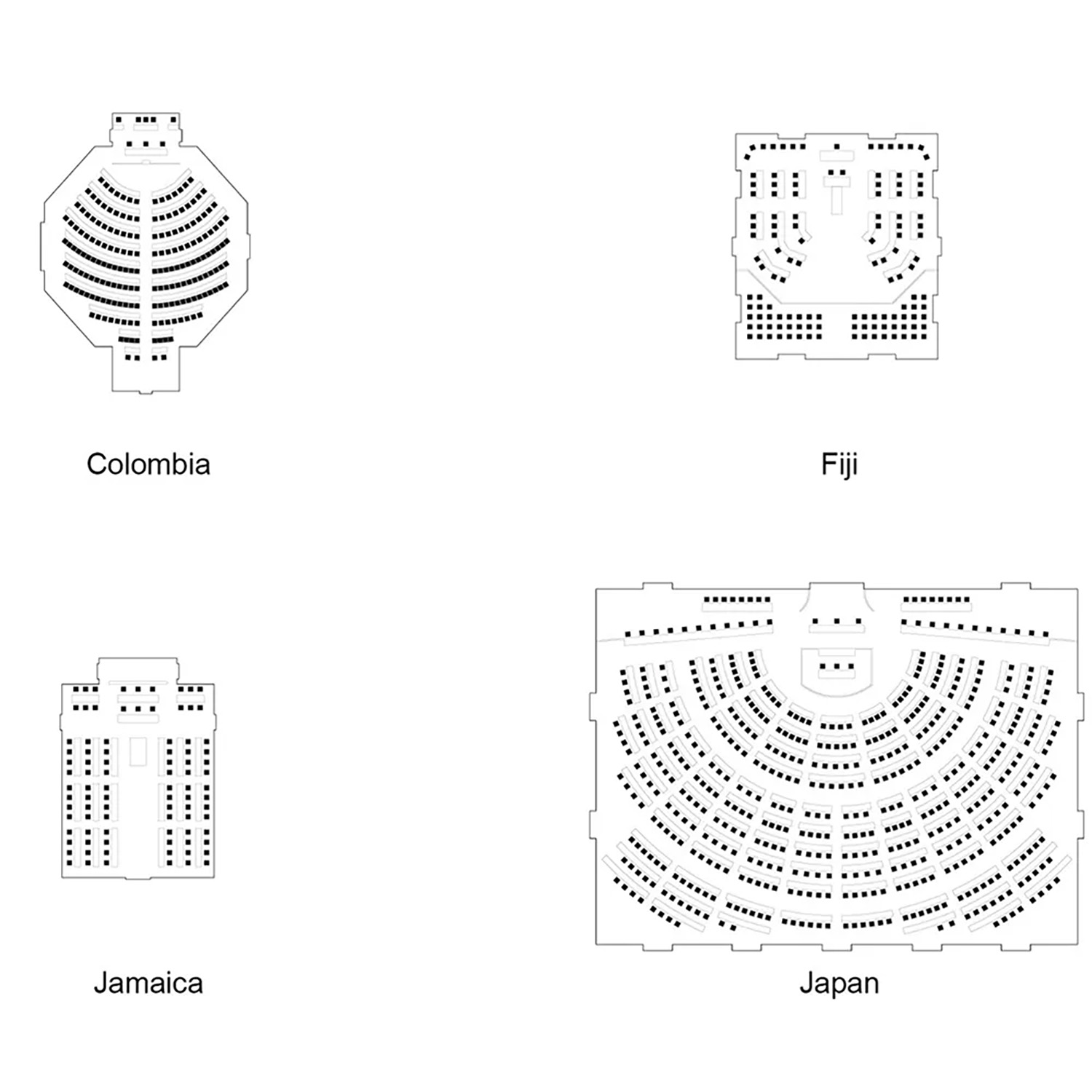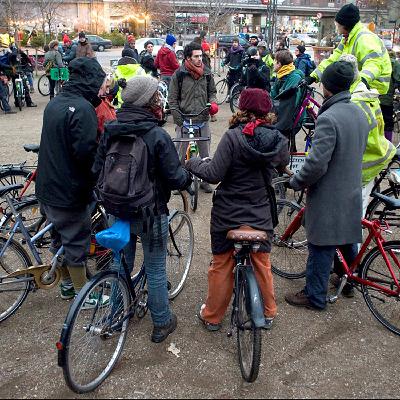Discover The Art of Assembly
The Art of Assembly

The Art of Assembly
Author: brut Wien
Subscribed: 2Played: 61Subscribe
Share
© 2021-2024 The Art of Assembly
Description
In this series of talks, curator and author Florian Malzacher is joined by guests from arts, politics and theory to reflect on the potential of assemblies in activism, politics and art. „The Art of Assembly" speculates on the potential of gatherings in a time where not much seems certain.
32 Episodes
Reverse
What kind of assembly is a neighbourhood? Partly choice, partly coincidence, partly shaped by market forces, class and politics, we find ourselves living in proximity to people we often, if at all, barely know. And yet, there is an expectation embedded in this closeness: the neighbourhood helps construct a sense of home, it is part of our social environment, it is even symbolically charged – a synonym for social care as well as social control. What responsibilities does it entail? What possibilities for shared agency does it offer? And how can artistic strategies contribute to the constantly shifting constellations it comprises?
What kind of assembly is a neighbourhood? Partly choice, partly coincidence, partly shaped by market forces, class and politics, we find ourselves living in proximity to people we often, if at all, barely know. And yet, there is an expectation embedded in this closeness: the neighbourhood helps construct a sense of home, it is part of our social environment, it is even symbolically charged – a synonym for social care as well as social control.
What is considered an acceptable opinion has been increasingly narrowed down in recent years. The 30th edition of The Art of Assembly asks where the limits of freedom of expression lie, what we have to listen to, how we can combine the need for safe spaces with the need for agonistic spheres – and when the state should intervene. Looking at the history of the Enlightenment, philosopher Susan Neiman doubts that the explosive current debates in Germany, for example, are really about freedom of expression. The historian Aziz Al-Azmeh profiles Arab and Islamic topoi present in Germany today and juxtaposes considerations of universalism with an intensified discourse of culturalism and cultural difference.
Following the cancellation of this edition at short notice due to an intervention by the City of Munich against the list of speakers, Villa Stuck has together with The Art of Assembly and the participants have decided to hold the event as planned nonetheless.
Water is a main protagonist of all human mythologies, a metaphor for life itself – and at the same time subject of countless, very concrete and rapidly growing conflicts. The 29th edition of The Art of Assembly asks how water can be considered not as a commodity based on concepts like ownership and exploitation, but rather as a common good or even as a partner: Erena Rangimarie Omaki Ransfield Rhöse, member of the royal family from the Waikato tribe, opens the conversation with her intimate knowledge about the connection of the Maori people with the Whanganui in Aotearoa (New Zealand), the first river worldwide that was granted legal personhood. Indigenous activist, writer and scholar of legal anthropology Edson Krenak Naknanuk shows how the legal imagination of indigenous people offers a different idea of ownership not only for the Amazon. In her play The Water, writer Kathrin Röggla reflects on how a mixture of fear and repression, actionism and bureaucracy, empty political promises and personal interests are preventing targeted action against the climate crisis. The artist and philosopher Elisabeth von Samsonow is fascinated by the bifunctionality that separates water as a symbol of life and its disciplining in technology and industry.
The net is tightening. What has long been a reality in other countries is also becoming increasingly noticeable in Germany – and not just in the east: new-right politicians are also gaining power in cultural policy, exerting pressure and threatening individual artists. For Amelie Deuflhard, director of the Kampnagel cultural centre in Hamburg, intimidation attempts by the AfD are part of everyday life. Theatre director Oliver Frljić has repeatedly provoked often violent reactions with his productions in Croatia, Serbia, Poland and Germany. Thomas Krüger, President of the German Bundeszentrale für politische Bildung (Federal Agency for Civic Education), has been looking for strategies to counter the shift to the right for many years. Curator Joanna Warsza examines how the effects of eight years of national-conservative cultural policy in Poland are slowly being reversed following the victory of the opposition. The 28th edition of The Art of Assembly asks specifically what tactics and strategies we can learn from each other in dealing with far-right intimidation and political interventions.
For years, theatres, museums and other art institutions have been trying to broaden their audiences – with limited success: the (Western) art field still mainly assembles a white, urban middle class by protecting its borders through distinction and offering cultural capital to those who find access. The 27th edition of The Art of Assembly takes an intersectional look at persistent exclusions and privileges: Author and psychologist Glenn Bech, who used to be ashamed about his working-class roots, confronts a homophobic society as much as an urban arts scene that seeks to appropriate the gay writer from the provinces. Theatre-maker Sahar Rahimi raises the question of why classism is rarely openly discussed in the cultural sector: Is her work more determined by her working-class background or her refugee biography? Julia Wissert, the first Black director of a German city theatre, tries to turn Schauspiel Dortmund into an open, safer, and diverse space – backstage, onstage, and in the auditorium.
Acoustic spaces play a part in defining borders and creating communities. While they fundamentally influence the shaping of public space, their ideological underpinnings, power structures and implications are often unacknowledged. The 26th edition of The Art of Assembly investigates how reconfiguring sonic environments and practices might lead to new modes of listening and the questioning of cultural hegemonies. Sound theorist Brandon LaBelle engages notions of social equality and acoustic justice, pointing out ways in which listening norms and conventions affect community-building and social participation. Architect and musician Fabio Cervi discusses his work as assistant audio investigator at Earshot, an agency founded by artist Lawrence Abu Hamdan. Earshot conducts sonic investigations for communities affected by corporate, state, and environmental injustice. Xenia Koghilaki examines crowd rituals and intensity in concerts and other musical situations, exploring collective movement as a means of resistance. Arts journalist and DJ Atiyyah Khan digs up lost histories of how South African jazz musicians mobilised communities and unconventional venues during apartheid, creating spaces of political resistance and joy..
Theatres regulate space and time for their audiences and demand collective engagement. Other kinds of venues – like museums or libraries – are designed to separate and isolate even large crowds and promote liberal ideas of emancipation. Everyone decides for themselves how long they want to stay and engage. The 25th edition of “The Art of Assembly” looks at artistic approaches to assemblies in cultural places not originally intended for performance. Choreographer Mette Edvardsen looks for soft spaces where her discrete performances become a porous part of the environment, where performers and audiences are in more than one space at the same time. Artist Tino Sehgal has been working with the DNA of museums and the liberal assemblies created by exhibitions, which he uses for his constructed situations – thin lines that direct attention and gazes, choreographing the paths of the audience.
How do we deliberate before and beyond language, how do we create relations without words, how are our bodies determined by the spaces we are in? The 25th edition of The Art of Assembly takes place in the context of Michael Kliën’s “Parliament”, a social choreography in which citizen-performers work in silence to hold council amidst the elemental phenomena and fundamental concerns of collectively lived experience. Political philosopher and literature theorist Michael Hardt together with Antonio Negri coined the term Multitude, describing a „multiplicity of singularities acting together“: a network that is neither homogeneous nor self-identical. Visual artist Pedro Lasch, director of the Social Practice Lab at Duke University, works with choreographies of festive gatherings, multiplatform social communication, and other artworks created through interaction. Literature scholar Corina Stan shows that relations are not only constructed by proximity but also by interpersonal distances that have shaped ethical thinking throughout modernity.
The pandemic introduced virtual gatherings into many people’s lives. Team meetings, activist assemblies, even theater performances were now attended from kitchen chairs, sofas, and beds. Both activists and performance makers (usually strong believers in the need for bodily presence) resorted to screens–and if only because there was no choice. Where are we now and what comes after Zoom? Is the metaverse more than a promise or threat? In this edition of the Art of Assembly we look at how performing arts are approaching digital realms. Journalist Kent Bye, who hosted hundreds of game developers, academics, creatives, and enthusiasts in the VR and AR fields on his podcast “Voices of VR,” offers a brief overview of virtual gatherings in art and activism. Jaamil Olawale Kosoko speaks about their virtual performance suite Chameleon: The Living Installments, exploring the fugitive realities of living at the intersection of digitality, Blackness and queerness. Sarah Rothberg introduces her playful VR/AR experiences and talks about the intersection of interactivity and performance.
Provocations as a means of disturbance have long been part of artists’ as well as activists’ basic toolkits. But in a time when many already feel permanently snubbed, artistic provocations often seem stale and redundant. The demand for repair, care, and healing dominates artistic discourse. On the other hand, when climate activists glue themselves to highways or oil paintings, emotions run high throughout society. Meanwhile, the political far-right blatantly focuses on lowering inhibition thresholds: Continued taboo-breaking pushes the boundaries of what is say- and doable. Núria Güell’s artistic practice continuously challenges moral and legal conventions when, for example, she offers herself as a bride to random Cuban man who wants to get a Spanish passport, or when, in reverse, she tries to become stateless herself. Renzo Martens disturbed viewers with videos such as Enjoy Poverty in which he centered himself as a white man and propagated the self-gentrification of Congolese plantations. Meanwhile, however, his role as a performer as well as the relationship to the protagonists of his work has fundamentally changed. In time where confrontational practices are generally questioned, The Art of Assembly investigates how the concept of provocation has shifted in recent years.
Inspiriert von Volkstribunalen wie demjenigen, das der Philosoph Bertrand Russell 1966 zur Untersuchung amerikanischer Kriegsverbrechen im Vietnamkrieg organisierte, aber auch von künstlerischen Einflüssen wie Brechts Lernspielen oder dem populären Agitprop-Theater der frühen Sowjetunion, sind Bürgergerichte zwischen Aktivismus und Kunst zu einer dramaturgischen Form und einem politischen Instrument zugleich geworden.
Contemporary stages have often become places to exhibit one’s own injuries, traumas, or shame. Theater as a safer space – in the… Read more XIX: Safe vs. Brave? Art Between Sanctuary and Confrontation (Miriam Ibrahim, Edit Kaldor und Ingo Niermann / Army of Love & Florian Malzacher)
The energy of body next to body. The excitement of the game. Winning, loosing, bursts of emotions. Shouting, singing, yelling, joy, and anger – sometimes on the verge of violence. Elite sport events bring together masses of people across nations, they are gathering with an immense personal importance for many and at the same time highly politicized billion-dollar businesses, streamlined for maximum profits on the borders of legality. This edition of The Art of Assembly takes place 50 years after the Olympic games in Munich, right in the middle of the legendary Olympiapark, envisioned as an open, democratic, and egalitarian space but immediately drawn into the abyss of world politics.
Artist and queer activist Z. Blace looks at how sport events could become owned by the community, counter-nationalist, counter-normative, gender-just and a sex-positive emancipatory experience. Caitlin Davis Fisher, a former professional athlete, works as movement researcher, artist and activist on gender, labor, the body, and community organizing in/with/through football. Expert in fan culture and social worker Michael Gabriel gives an insight into the cultural practices of the ULTRAS, claiming streets and stadiums with elaborated choreographies and the self-confidence of the masses.
The event took place in the frame of “Soft Democracies”, a project by raumlaborberlin as part of the 50th anniversary of the 1972 Munich Olympics, organized by the Cultural Department of the City of Munich.
At least since Joseph Beuys’ legendary “International College for Creativity and Interdisciplinary Research” artistic assemblies are also a playing field for the production and transfer of knowledge. The 17th edition of “The Art of Assembly investigates along concrete artistic practices how tools and experiences from performing arts offer settings and strategies for unexpected communication and transversal education: Choreographer and curator Satu Herrala in her works focusses on embodied knowledges in artistic and curatorial work, creating conditions for art to summon collective and transformative agencies. Artist Ahmet Öğüt – initiator of the Silent University, a solidarity-based knowledge exchange platform by displaced people and forced migrants- often seeks his collaborators outside the art field. Theatre maker Lotte van den Berg, one of the initiators of the ongoing project “Building Conversation”, centers her practice around collective experiences and the relation between performance and social as well as ecological challenges. How can art offer spaces for empowerment and self-development?
When activist movements gain momentum, even win elections after many years of struggle and work on the ground, there is a lot of enthusiasm – but also larger-than-life expectations. A diverse electorate with often very different expectations demands immediate and fundamental shifts of politics. The parties once in power just wait for any opportunity to attack. The former establishment uses its long-knit networks to slow down any transition. And former allies accuse the elected representatives of their compromises. So, what does it actually mean to govern, to change structures, work with a large administration, include the political base, and accomplish concrete change?
Inspired by the impressive development of the Croatian movement “Možemo!” with its landslide victory in the Zagreb city elections in May 2021, in this edition of The Art of Assembly cultural worker and activist Teodor Celakoski describes the strategies used to achieve “Možemo!’s” success and talks about the difficulties to implement new policy. Artist, activist and former member of the Spanish parliament Marcelo Expósito gives insides in the struggles, achievements, and failures of Podemos and other citizens’ electoral organizations in Spain. Drawing on the trajectory of SYRIZA after winning the general election in Greece in 2015, philosopher Athena Athanasiou reflects on the general conditions activist movements are confronted with when coming to power.
The question of who or what has to be represented draws wider circles than most assemblies with their focus on humans. In his fundamental critique of modernity, the sociologist of science Bruno Latour sketched out a “parliament of things” as early as 1989, in which people, animals, plants, and objects jointly determine how they even could decide and how they want to live together. Thirty years later, Latour sums up, “The question is no longer to grand rights to non-humans, but to accept to be dependent on them.” But what does that actually mean? How can non-human representation look like, what would be a non-anthropocentric assembly? In the 15th edition of The Art of Assembly the theatre group andcompany&Co. praises the intelligence of insects and considers renaming itself ANTCOMPANY, while philosopher Eva von Redecker proposes a “revolution for life” in order to escape the prison of capitalism and find new forms of solidarity: Care instead of domination, regeneration instead of utilization, participation instead of exploitation.
Ever since the audience light in most Western theatres has been turned off in the 19th century artists have tried to push spectators out of their comfort zone again. The 14th episode of The Art of Assembly looks at radical approaches to audiences, turning them from spectators into participants, witnesses, collaborators, and enemies. Art theorist Claire Bishop reviews how the relationship between art and audience has changed in the decade that has passed since the first edition of her influential book Artificial Hells. Artist and activist Tania Bruguera has always challenged her audience to become active participants not only in her performances but also in society. The stage personas of theatre maker Ann Liv Young tend to come too close – physically as well as psychologically – attacking her audience and making herself attackable at the same time.
Times may change, but not so the venues of official democratic decision-making: opposing benches, horseshoes, frontal classroom style, circles or semi-circles – nearly all parliaments across the planet follow one of these spatial logics. But the shape of plenary halls not only create metaphors of representation they also organize and influence very concretely how legislative bodies work. The 13th edition of The Art of Assembly looks at how architecture shapes decision-making – and at what alternatives there might be. David Mulder van der Vegt, who has researched the design of the parliament halls of all 193 member states of the United Nations, reflects on the correspondence between their layout and the type of democratic structure they represent; Markus Miessen proposes the concept of “crossbenching” as a practice of independent individuals acting without mandate, and without having to respond to a pre-supposed set of protocols or consensual arrangements.
Numerous theater makers and artists have been inspired by the concept and the performative reality of assembly in recent years, creating, directing, initiating trials, parliaments, congresses, summits and assemblies in white cubes and black boxes, on proscenium stages and public spaces. But the relationship between theatrical and political representation remains complicated. What are difference and proximity between physical presence within an art institution and on, for example, an occupied square? The 12th edition of The Art of Assembly looks at the often productive, often ambivalent relationship between art and activism, inviting three very different initiators of assemblies: Theater director Milo Rau believes in staging and realistic representation in his plays, while for his tribunals and trials he invented what he calls „symbolic institutions“; the School of Resistance uses theatrical settings but understands itself as an activist, not an artistic project; and the activists Isabelle Fremeaux and Jay Jordan believe: If you truly want to do politics, you have to desert the institution of art and entangle insurrectionary imagination into the everyday life of movements.




